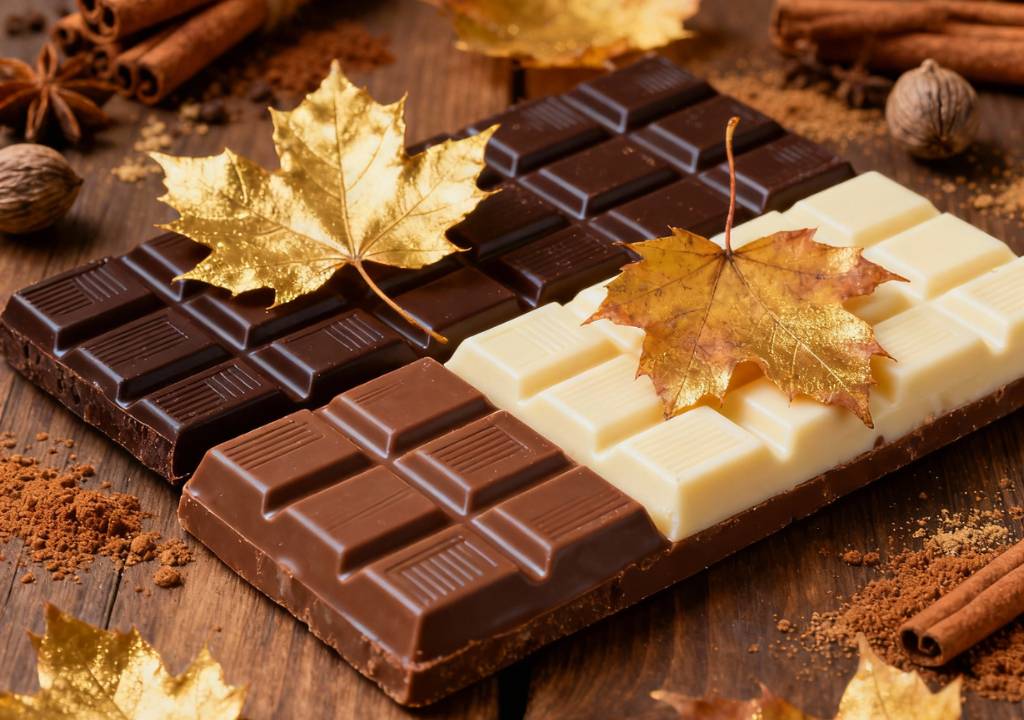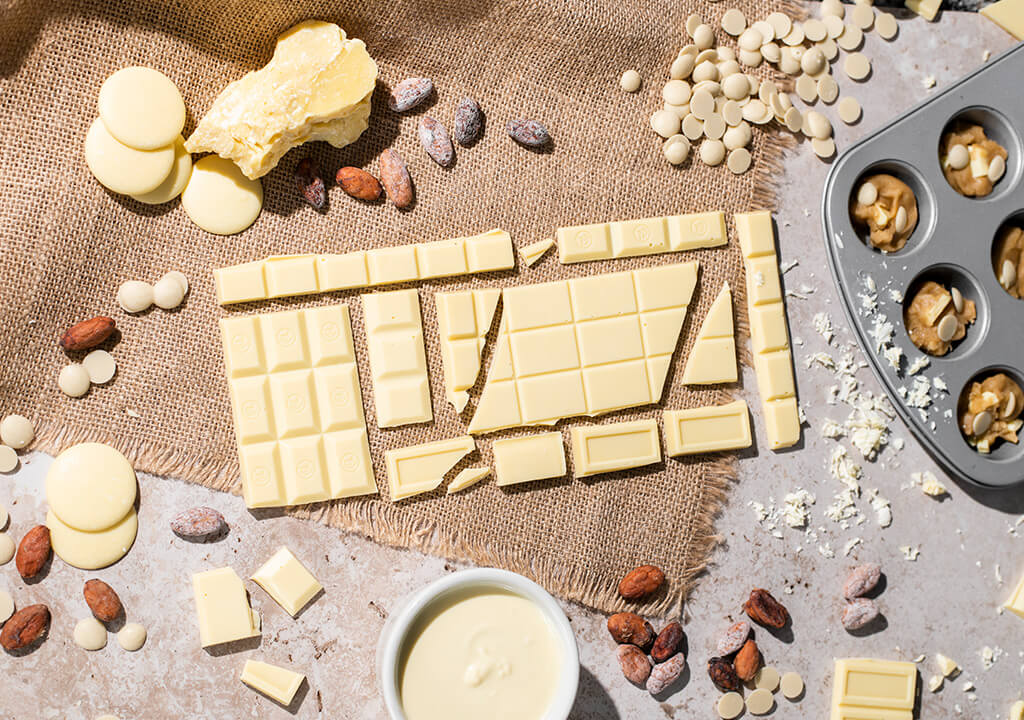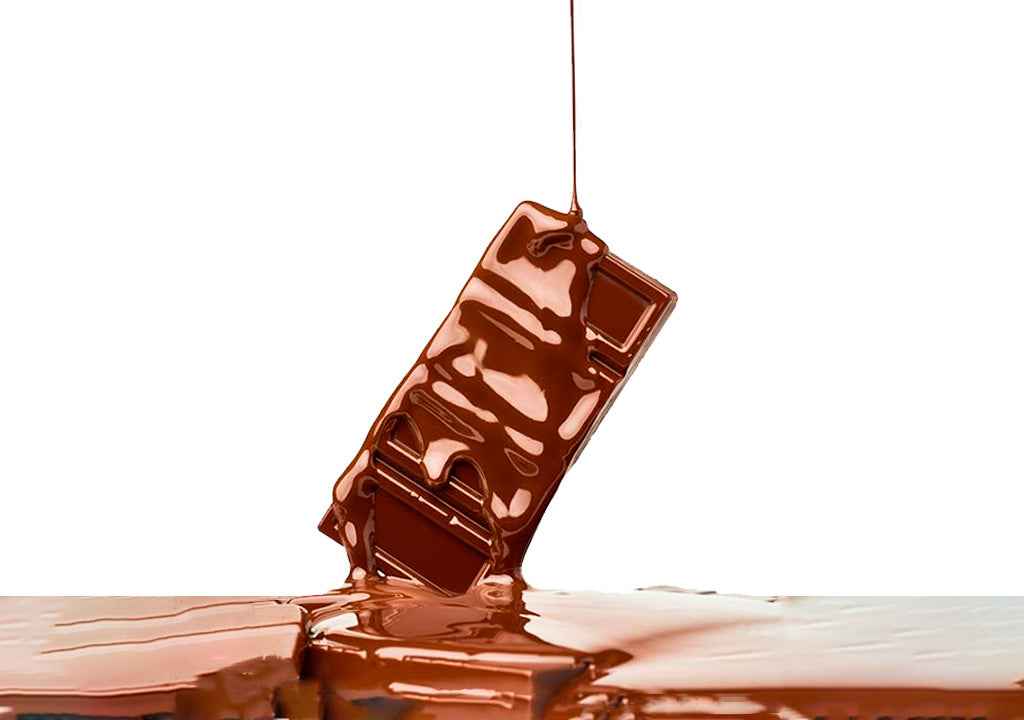
How to make ice cream using real chocolate?

Creating the perfect ice cream is a delicate balance that comes to fruition when we understand the essence of each ingredient we use. This blog explores the art of using chocolate couverture, a key player in the symphony of flavours that constitutes our beloved dessert.
Our chocolate couverture, characterized by superior quality cocoa beans, stands tall in the category of fine chocolates, offering a smooth texture and an exquisite flavour profile. However, integrating this luxury ingredient into ice cream recipes is a delicate process that requires a keen understanding of its attributes.
As we venture deeper into the chocolate-infused ice cream realm, we will explore how to optimize our couvertures in your recipes this summer. So, get ready; let's embark on a journey that will revolutionize your culinary creativity and dessert enjoyment this season.
How to make my perfect ice cream?

Creating the perfect ice cream recipe is not easy mainly for two reasons; the first is that three phases must coexist: liquid, solid, and gaseous, and the second is that the flavours in a state of matter at a negative temperature are not appreciated or released in the same way as in a food at a positive temperature.
For creating an ice cream with the desired characteristics in texture and flavour, it is necessary to know the essential criteria to consider for designing a formula that adapts perfectly to what we are looking for. The different criteria should set working guidelines while allowing us enough flexibility in the formulation to make our ice cream unique.
These criteria are:
1. Fat: This element gives the ice cream its characteristic texture but also influences the warm sensation in the mouth and the speed at which the ice cream melts once it has been served. There are two types of fat sources: those of animal origin and those of vegetable origin.
The animal ones are commonly used in homemade ice cream, which we obtain from milk, butter, etc. And the vegetable ones are obtained from vegetable oils such as coconut, palm, and sunflower. Ice cream made with vegetable fat has an advantage over milk fat, as the balance in solid fat content and fatty acids composition can be optimized.
We can work with different physical properties of fats that depend on the fat source and the treatment of the vegetable fat (fractionation, hydrogenation or interserification). In the case of hydrogenation, saturated fats are formed that will protect the ice cream against temperature changes and give us a desired creaminess.
Traditional ice creams used to work with fat % above 10%, even up to 14%. Technically, these are possible ice creams, but the trend is towards recipes with fat percentages below 10% and closer to 6%. Undoubtedly, the rate in the formula will also be higher in ice creams where the source of flavour is fat (chocolates, nuts, etc.).
2. Carbohydrates: Also called sugars, they are essential when balancing an ice cream for three reasons:
- To provide the ice cream with the sweetness we want to give it and which is linked to the personality we like. This value ranges from 16% to 20%.
- To control the serving temperature of the ice cream. This category includes traditional sugars, polyols, and fibres.
- Sugars are useful to adjust ice cream hardness.
3. Proteins/SLNG: Normally, these molecules are added to ice cream through typical ice cream ingredient.
The term Dairy Solids Not Fat (SLNG) is used in the industry. This value results from adding the protein of dairy origin with lactose (milk sugar). The limits are between 7% and 11% depending on the type of ice cream to be made, as lower values would lead to a lack of functional protein and higher values would lead to an excess of lactose, i.e., a sandy sensation is created by the crystallisation of lactose during the storage time.
Remember that when assessing the protein content of your formulations, the quality of the protein, rather than the quantity, counts.
4. Stabilisers/Emulsifiers: Although they are a minor ingredient, their function in ice cream is vital. We move in doses between 0.4 and 0.7%, depending on the type of ice cream to be made, the % of fat, and the chosen combination. It is essential to use functional ingredients: emulsifiers and stabilisers to preserve ice cream's flavour, texture, consistency, and resistance.
- Emulsifiers: The function of emulsifiers is to make two immiscible liquid phases coexist: fat and water. They impart a finer and smoother texture and consistency at the finished product level, improving melting properties and extending resistance to shrinkage. Also, emulsifiers enables the formation and stabilization of the air bubbles in the ice cream.
- Stabilisers: These are molecules whose primary function is to react with the water in the medium, trapping it. Unlike emulsifiers, their mission is not to respond with fat, so their use is essential in any ice cream, whether or not it contains fat. At the final product level, they help to smooth the texture, reduce the formulation of large crystals, improve melting properties, and prevent whey separation.
5. Flavours: What flavour will you give the ice cream? For this, not only organoleptic but also technical evaluations have to be considered since in most cases, the complementary components to the flavouring part will influence the balancing of the recipe. When balancing our formula, we must consider each ingredient's physicochemical parameters to flavour our ice cream.
6. Total solids: In the balancing criteria, the amount of water is never chosen as the quantitative value of the recipe. We will always balance our ice cream with the rest of the ingredients but always watch the amount of water left.
As what is not water is solids, we use this value to categorise the recipe. So, once we have made a recipe, we must calculate the resulting total solids. Usually, this value can vary between 33% and 40% for artisan cream ice cream. Therefore, we must always consider the amount of water that remains after the preparation of each recipe. Less water can result in an ice cream that is too heavy and difficult to scoop, and too much water results in crystallised and brittle textures.
7. Air: The last criterion is air. This is incorporated into the ice cream by churning the miz during the churning process. The air incorporated (overrun) will condition the recipe as it will vary depending on the type of ice cream to be made. Usually, we can set a low overrun (35% or less) to obtain an artisan ice cream. Or a high overrun (up to 100%) if we want to make more industrial ice cream.
How to interpret the product fact sheet to get the best out of our chocolates?
When making ice cream and balancing it perfectly, knowing the information about each ingredient is essential to adjust the recipe. When using our chocolates, you must parameterise all the data provided by the coating. The information we need to create the perfect formula will be obtained from the technical data sheet; in the declaration of ingredients, we will obtain qualitative data, and in the nutritional information, we will get quantitative data. Look in the data sheets for sugars, fats, proteins, milk solids, and other solids.
Below, we show you an example of how to interpret the technical data sheet of one of our dark chocolate coatings to obtain the ice cream balancing parameters:
FACT SHEET
Description: Dark chocolate produced from Colombian Fino de Aroma cocoa beans from different regions of Colombia. Can be used as chocolate couverture, for moulding, and as a confectionery ingredient.
Ingredients list: Cocoa mass, sugar, cocoa butter, and vanilla extract.
Mode of Production:It is a dark chocolate made from Fino de Aroma cocoa beans obtained from the mixture of cocoa mass, sugar, and cocoa butter, subjected to mixing, refining, conching, tempering, injection, solidification, and packaging.
NUTRITIONAL INFORMATION
Nutritional information based on 100 g: Energy
|
Energy 605,90 Kcal |
Trans Fatty Acids 0 g |
|
Energy 2335,09 kJ |
Cholesterol 0 mg |
|
Total Protein (1) 8,68 g |
Sodium 0,20 mg |
|
Total Carbohydrates 37,11 g |
Potassium 541,59 mg |
|
Sugars (2) 19,45 g |
Calcium 120,75 mg |
|
Including Added Sugars 19,45 g |
Iron 1,77 mg |
|
Dietary Fiber 11,09 g |
Vitamin A 0 UI (mcg) |
|
Total Fat (3) 47,37 g |
Vitamin C 0 mg |
|
Saturated Fat 28,53 g |
Vitamins D 0 mcg |
From this nutritional information and the list of ingredients, we can obtain the following balancing information:
(1) The protein, in this case, as there is no milk, is only vegetable protein from the cocoa.
(2) When balancing, we look at the total sugars, as the rest of the carbohydrates are fibres.
(3) The total fat from the cocoa butter (original cocoa butter plus added cocoa butter).
In these dairy-free toppings, the non-fat dairy solids are 0.
How to use our couvertures in your recipes this summer?
Let's journey through all the regions of the Luker Chocolate universe to discover their particularities and their best pairing with different types of ice creams. For each couverture we propose, we have selected criteria for balancing the recipe based on choosing a percentage of initial cocoa mass. Based on this value, we have adjusted the parameters of those couvertures that allow different dosages to achieve their maximum splendour.
The second tasting criterion has been to test the same couverture in a recipe without any added dairy derivative (water-based). A certain percentage of skimmed milk powder has been added to another recipe, allowing us to find the medium in which each couverture gives the most personality.
SELECTED-ORIGINS CHOCOLATE PORTFOLIO
The sensory profile of Tumaco-origin cocoa is characterised by a strong cocoa flavour with distinct nutty notes, followed by delicate tones of tropical fruits and light acidity. Its flavour presents a good balance between the cocoa notes and the typical bitter taste.
In our portfolio, we have an extra dark Tumaco 85% couverture. This chocolate has an exquisite and robust profile with a defined aroma, with a bitter taste balanced with cocoa notes and delicate sweet tones that, combined with subtle fruity and nutty notes, make this chocolate the best expression of dark chocolates.
We compared the flavour notes of the natural couverture with its behaviour in two types of ice cream: one water-based and one with a percentage of skimmed milk powder to assess its profile. Below is the result:
|
|
COCOA |
ACID |
ASTRINGENT |
BITTER |
SWEETNESS |
FRUITY |
FLORAL |
NUT |
|
COUVERTURE (Room temperature) |
7.0 |
1.5 |
2.0 |
6.0 |
2.0 |
1.0 |
0.0 |
2.0 |
|
WATER-BASED ICE CREAM (No additional milk added) |
6.0 |
1.5 |
2.0 |
6.0 |
2.0 |
1.0 |
0.0 |
2.0 |
|
MILK-BASED ICE CREAM (Skim milk powder added) |
7.0 |
1.5 |
1.5 |
5.0 |
2.5 |
0.5 |
0.0 |
2.0 |
The optimised recipes to make chocolate Tumaco ice cream are:
|
INGREDIENTS |
WATER-BASED |
MILK-BASED |
|
|
% |
% |
|
Water |
58.25 |
57.50 |
|
Skimmed milk powder |
0.00 |
6.00 |
|
sucrose |
11.00 |
10.00 |
|
Dextrose |
6.75 |
7.80 |
|
Glucose DE=38 |
4.90 |
0.00 |
|
Neutral stabilizer |
0.50 |
0.50 |
|
85% dark chocolate couverture Tumaco |
18.50 |
18.50 |
|
Salt |
0.10 |
0.10 |
|
|
|
|
|
Total |
100.00 |
100.00 |
|
BALANCE PARAMETERS |
WATER-BASED |
MILK-BASED |
|
Sweetening power |
19 |
18 |
|
Operating temperature |
-10.96 |
-10.98 |
|
% fat |
9.24 |
9.26 |
|
% non-fat milk solids |
0 |
4.96 |
|
% other solids |
7.03 |
7.48 |
|
% total solids |
40 |
41.63 |
In the case of TUMACO water-based, the characteristic note of cocoa is very well perceived, with great bitter power and a very long taste. The good roasting of the cocoa is noticeable and soft notes of coffee appear. Nuts and almonds are also very present: walnuts and almonds. Its mild sweetness reminds us of fresh fruits such as coconut and grapes. The astringency is very marked on the finish. Its colour is dark. Finally, the aromatic part stands out, with marked aromas of cocoa and dried fruits.
For the TUMACO with milk, the milky tones are not perceived. The ice cream is indeed much more rounded. The bitterness does not attack so much, but the cocoa tones do. The nuts are significant, and the sweetness is more present, albeit subtle. Its colour and aroma are less aggressive than the previous one, although it is much more pleasant on the palate. The benefit of the milk protein is very noticeable: much fluffier ice cream.
HERITAGE RECIPES CHOCOLATE PORTFOLIO
This milk chocolate proposal brings together the qualities of cocoa, giving it a stronger character. The exciting blend of flavours brings cocoa tones to the top with a creamy and smooth texture. The unique milky and caramel flavour unfolds an unmistakable sweet taste that gives the chocolate a character of exquisiteness.
To assess its profile, we analysed the flavour notes of the natural couverture with its behaviour in a skimmed milk powder-based ice cream. This is the result:
|
|
COCOA |
ACID |
AROMA |
DAIRY |
SWEETNESS |
COLOUR |
|
COUVERTURE (Room temperature) |
5.5 |
0.0 |
4.5 |
3.0 |
4.5 |
4.0 |
|
MILK-BASED ICE CREAM (Skim milk powder added) |
5.5 |
0.0 |
4.0 |
3.0 |
4.0 |
3.0 |
The optimised recipe to make chocolate Caribe ice cream is:
|
INGREDIENTS |
MILK-BASED |
|
|
% |
|
Water |
59.00 |
|
Skimmed milk powder |
3.00 |
|
sucrose |
4.50 |
|
Dextrose |
5.00 |
|
Glucose DE=38 |
3.00 |
|
Neutral stabilizer |
0.50 |
|
45% milk chocolate couverture |
25.00 |
|
Salt |
0.00 |
|
|
|
|
Total |
100.00 |
|
BALANCE PARAMETERS |
MILK-BASED |
|
Sweetening power |
21 |
|
Operating temperature |
-10.87 |
|
% fat |
10.83 |
|
% non-fat milk solids |
5.59 |
|
% other solids |
2.65 |
|
% total solids |
41.40 |
Ice cream with character to the point that we recommend this topping with milk. It shows intensity and roundness. As a curiosity, a particular coconut flavour stands out. The milky part offers caramelised flavours and reminds us of an authentic lactée. The sweetness is noticeable but very balanced. The texture is excellent and spongy. The ice cream is warm in the mouth, and the colour is beautiful.
To sum up, it is an excellent option for preparations in which we want to highlight the caramelised ice cream. It can be used in display cases or cake interiors. Combined with other ingredients, it is very rounded. As an example, it goes very well with coffee.
The idea of integrating these chocolates into your preparations is to respect the flavours of each coating as much as possible and highlight the power of each one to obtain the perfect ice cream. With their taste, chocolates transmit the characteristics of the land where they are grown and invite us to travel with them. Dare to include the technique of balancing with the sensory facets of our chocolates. You will discover unique flavours!





